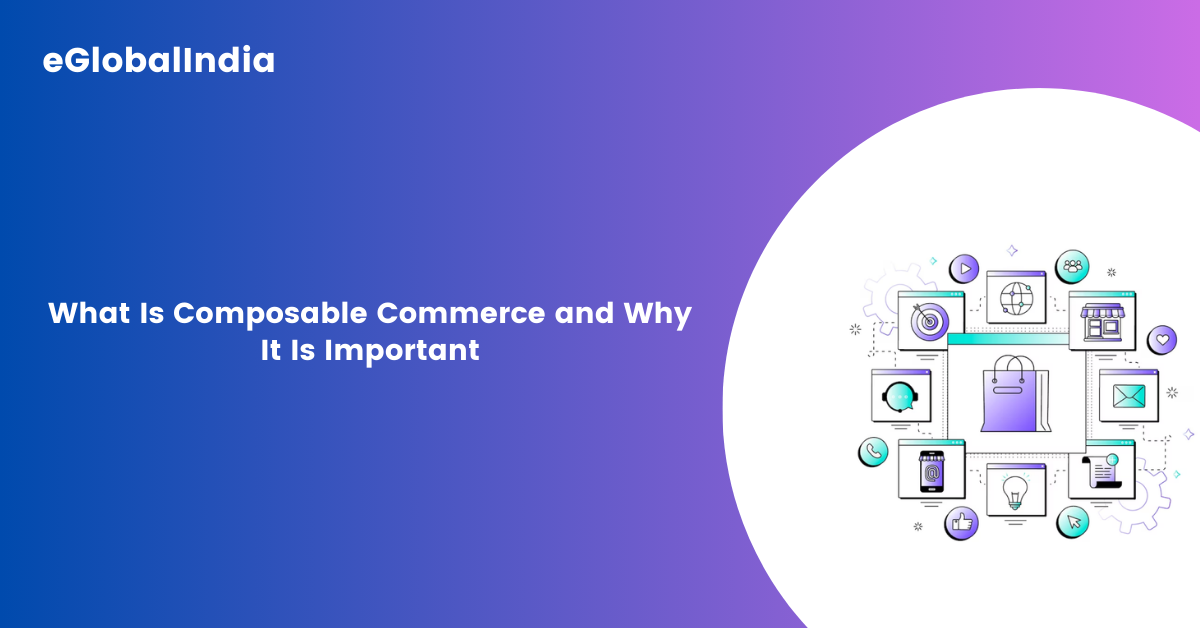

Running an online business today means keeping up with customer needs, using the right tools, and finding better ways to grow. Many businesses are moving away from old, all-in-one eCommerce systems that are hard to change or update. These traditional platforms can slow down progress and limit new ideas. That’s why more companies are turning to something called Composable Commerce.
Composable Commerce allows businesses to build their online stores using smaller, flexible parts. Each part handles a specific job, and they can be added, removed, or replaced as needed. This makes it easier to adjust to changes, try new things, and improve customer experience without rebuilding the whole system.
This article will explain what Composable Commerce is, why it matters, how it works, and what benefits and challenges it brings. We’ll also look at real examples of businesses using this approach. Whether you’re a developer, a store owner, a marketer, or someone interested in eCommerce, this guide will help you understand the value of Composable Commerce in a simple and clear way.
Composable Commerce is a modern approach to building digital commerce experiences using best-of-breed solutions. Instead of relying on a single, monolithic commerce platform, Composable Commerce allows businesses to pick and choose individual components (services) that best meet their specific needs and integrate them seamlessly into a custom commerce stack.
This concept is rooted in the idea of Modular Architecture where each component or service (like Product Information Management, Shopping Cart, Checkout, Content Management, Payments, etc.) is independent and can be integrated via APIs. It aligns with the MACH principles:
These principles guide the design and development of systems that are agile, scalable, and adaptable to change.
Composable Commerce leverages a wide variety of independent services and platforms that come together to form a complete commerce experience. Below are some essential components:
Each of these can be integrated via APIs to form a tailored solution that aligns with specific business goals.
Composable Commerce allows businesses to create their own technology ecosystem by selecting and combining various independent microservices. The architecture is typically designed using the following process:
This modular approach enables continuous improvement and experimentation without disrupting the entire system.
Despite its many advantages, Composable Commerce is not without challenges:
However, these challenges can be managed with the right development team and strategy.
Composable Commerce is ideal for:
Startups and small businesses can also benefit if they have access to skilled developers and want to build a future-proof stack from the beginning.
As digital commerce continues to evolve, the shift towards composable architectures will accelerate. More businesses are adopting API-first, headless, and microservice-based platforms to stay ahead of customer expectations and market trends.
With the rise of AI, personalization, and real-time data-driven decisions, composable systems will become even more powerful and essential. Businesses that adopt this approach now will be better positioned to adapt and thrive in an increasingly competitive market.
Q1: What is Composable Commerce in simple terms?
A : Composable Commerce is a modern approach where businesses build their own eCommerce system by combining the best individual tools and services instead of using one all-in-one platform.
Q2: How is it different from traditional eCommerce platforms?
A : Traditional platforms are monolithic (everything is bundled together), while Composable Commerce uses modular services that can be added, removed, or updated independently.
Q3 : Is Composable Commerce only for big businesses?
A: No. While it’s more common in mid-to-large enterprises, small businesses with the right technical resources can also benefit.
Q4 : What is MACH architecture?
A: MACH stands for Microservices, API-first, Cloud-native, and Headless—principles that guide modern digital architecture, including Composable Commerce.
Q5 : What tools are needed for Composable Commerce?
A : Tools like headless CMSs, PIMs, payment processors, cart services, and analytics tools, all integrated via APIs.
Q6 : Can I migrate from my current platform to a composable one?
A: Yes. Many businesses start by replacing one component at a time, gradually transitioning to a fully composable architecture.
Conclusion
Composable Commerce represents the future of digital commerce—flexible, scalable, and customer-centric. It enables businesses to tailor their commerce experience, innovate rapidly, and remain competitive in a dynamic market. While it comes with its own set of challenges, the long-term benefits outweigh the initial complexity.
For businesses that want to lead rather than follow, embracing Composable Commerce is not just an option—it’s a strategic imperative.
Start Your Composable Commerce Journey – Contact Us

May 14, 2025

May 12, 2025

May 9, 2025

© 2017 All rights reserved.